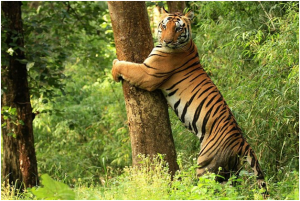
TTT NEWS NETWORK
KOLKATA, 5 SEPTEMBER 2023:
Madhya Pradesh, the heart of India is the second-largest state in the country. It is known for its historical sights, and temples along with national parks where you can enjoy the natural beauty.
Let’s plan to explore various kingdoms, Wild, historic and pilgrim in your coming vacation. Also known as the ‘Tiger State of India’ Madhya Pradesh offers a wide variety of accommodation choices to suit your taste and budget. No matter where you travel in MP you will get a warm and welcoming place to stay. Either solo traveller / family with kids, or corporate traveller – MP has a place right for you.
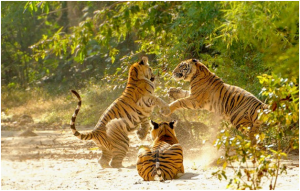
( Bandhavgarh)
Starting with the impenetrable jungles of little-known Sanjay National Park in Parsili, you will reach the crumbling ruins of Baghelkhand dynasty’s forgotten legacy next. If these offbeat corners satiated the sense of exploration that you will so seek from travel, the well-trodden trails of Panna and Khajuraho offered a balancing respite from uncertainty.
Coming to the logistics of travel, here’s where you can stay through the fourteen days trip across Madhya Pradesh.
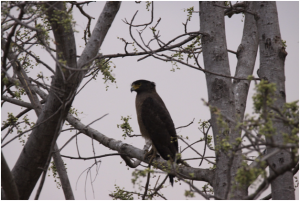
( Sanjay Dabri National Park)
Panna serves as a perfect place for holiday tours. The location of the National Park is crucial as it is situated at a point, where the continuity of the forest belt starts from Cape Comorin in the south is broken and from their Gangetic plains begin. The Ken River which flows through the reserve from south to north is home for Gharial and Mugger. Ken offers some of the most spectacular scenery to the visitor. The terrain of the reserve is characterized by extensive plateaus and gorgeous scenes. Tiger roams freely in this secure habitat along with other creatures like leopard, wild dog, wolf, hyena, and caracal, Sloth bear, Sambar, Chital and Chowsingha to name a few. The fauna and flora comprises more than 200 spices including a host of migratory birds.
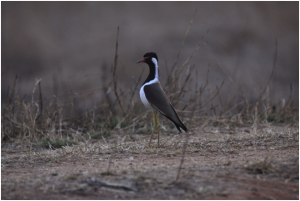
Panna National Park has two entry gates, one at Madla and the other one is at Hinauta. While both the gates are almost equidistant from the town of Panna, Madla is probably the more comfortable option of the two since this falls right on the Highway 39 on the way to Khajuraho.
Madla Jungle Camp, situated right next to the Madla safari gate. Built-in a jungle camp style with 9 well-appointed Swiss Cottage tents, the serenity of the adjoining forest spills over generously into the camp. The tents are quite comfortable, air-conditioned and there’s hot water facility along with Cable TV and minibar. Also, there’s Wi-Fi only at the reception. You can peacefully wake up at 5.30AM and still be on time at the gate for the safari.
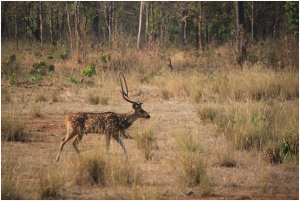
Visit to Fort of Ajaygarh which buit in 1765 AD by the nephew of Maharaja of Jatipur. The fort is situated at a height of 800ft. National Museum has a remarkable collection of icons and coins.
Panna is also famous for Diamond Mines. You can see most precious gem of the world being extracted from earth.
Mahamati Prannathji Mandir is one of the most revered pilgrim places for the Pranami sect followers. Other than this Padmavati temple, Baldevji temple, Jugal Kishor temple, Gatha falls and Kalinjor fort are worth a visit.
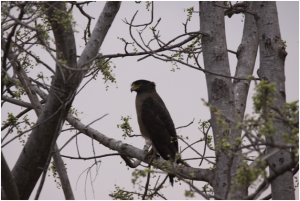
The temples of Khajuraho are India’s unique gift to the world, representing a paean to life, in every form and mood. The Khajuraho temples were built in in the span of a hundred years from 950 – 1050 AD. Of the 85 original temples 22 have survived till today to constitute one of the world’s great artistic wonders. The creators of Khajuraho claimed, Hemwati, the lovely young daughter of a Brahmin priest was seduced by the moon god while bathing in a forest pool. The Child born of this union was Chandravarman, founder the Chandela dynasty. Brought up in the forests, who sought refuge from a censorious society. It is said that Chandravraman had a dream visitation from his mother. Chandelas were followers of the Tantric cult which believes that gratification of earthy desires is a step towards attaining the infinite liberation or nirvana.
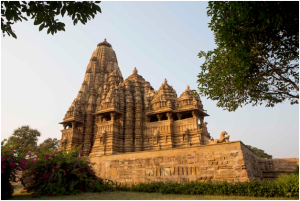
(KHAJURAHO)
Khajuraho’s temples are primarily divided into three geographical divisions group -Western and Eastern and southern group of temples.
In the Western Group there is Kandariya Mahadeo temple. Approximately 800 sculptures are carved of this magnificent temple. The three main compartments are the entrance (ardha- mandapa), assembly hall (mandapa), sanctum (garbha griha) with further additions in the more developed temples. The erotic sculptures are concentrated on the northern and southern façade. Other themes of sculpture in the temple include warriors and hunters, acrobats, musicians, dancers, devotees and amorous couple.
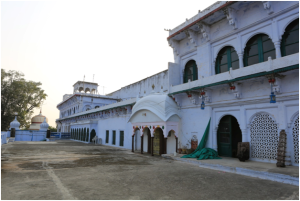
Chaunsath Yogini – The only granite temple is dedicated to Kali. Only 35 of the original 65 shriones remain. Another Kali temple is Devi Jagdambe Temple.
Chitragupta Temple – The temple walls depict an artistic profusion of sculpture of God and Goddesses. There is a magnificent carving of Lord Vishnu with 11 heads, locally known as Bharatji’s temple.
Matangeswara Temple – The temple is dedicated to Shiva, has 8 feet high lingam and outside the precincts of the western group.
Lakshmana Temple – There are 4 shrines at the corner of the courtyard. It displays the outburst of creativity in stones. The main temple is entered through carved panels and ornamented doorway known as Maker Tomas for the arched crocodiles.
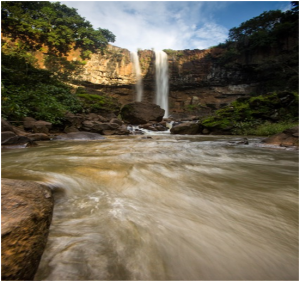
( Amarkantak)
Viswanath Temple – The interior of the temple contain some of the well-known sculptures.
In the Eastern group of temples there are three (Adhinath Temple, Ghantai Temple, Parsvanath Temple) temples of the group are the Brahma, containing a four- faced lingam, the Vamana which is adorned on its outer walls with carving of Apsaras in a variety of sensuous attitudes, and the Javari, with a richly carved gateway and exterior sculptures.
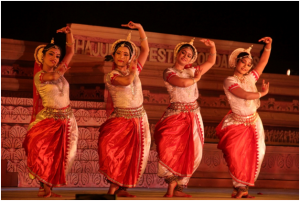
In the southern group you can see Duladeo Temple, Chaturbhuj Temple, Tribal and Folk Arts state museum, sound and light show, Dubela Palace, Tomb of Maharaj Chhatarsal.
Most of the hotels are located on the road towards the airport, Heritage Hotel, on the other hand is located away from the bustling center of Khajuraho in a quiet but vast corner. It’s a short drive from both Eastern and Western group of temples by vehicle, and it’s an added bonus that it’s at a perfectly walk able distance from Western group.
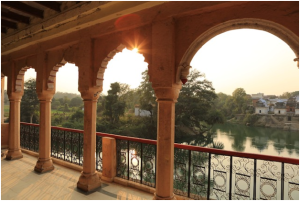
(Rewa)
For those intending to visit the jungles of Sanjay National Park, Parsili Resort run by MP Tourism department is the available option for accommodation. Situated amidst dense forests, right along the banks of Banas River, Parsili Resort has an air of coziness around it. It's situated at a distance of 10km from the national park gate and you may spot a chital, Jackal or a peacock. It’s truly a hidden retreat. The location is spectacular; you can actually hear the pleasant sound of river flowing even inside the room. The crowning glory of this room is the large balcony that it comes with, which has a direct view of the river and mountains beyond!
Walking barefoot 4km trek on soil, soft and moist sand bed of Banas River or grass is not only out of the way experience but also unique way of feeling the touch of mother Earth. It’s a de- stressing, refreshing and exciting walk surrounded by chirping birds and fresh breeze. The trek starts at 6AM with a green surroundings in the mellow rays of rising sun and is led by a naturalist. A small back pack containing water bottle, fruits, and sandwiches is provide by Parsili resort.
Sanjay Dubri Tiger reserve is a wildlife paradise. The core comprises of Dubri Sanctuary and Sanjay National Park and Guru Ghasidas National park forests dominated by Sal, Dhawda, Semal trees etc. and merge into the forest of Bandhavgarh National Park. The famous white tiger ‘Mohan’ found and rescued from the forest by the Maharaja of Rewa. Now these beautiful Sal forests are home for Tiger and hundreds of other species of wild animals from wildlife corridor, connecting Bandhavgarh and Palamau Tiger reserve. Occasionally the wild elephants from neighboring Chhattisgarh area venture into the forest of tiger reserve for temporary shelter.
Rewa is a place with natural beauty and archaeological treasures such as cave paintings, Buddhist stupas, and Kalchuri period riches of sculptures. Under Baghela rulers Rewa reached at a zenith in the field of music and literature. Many waterfalls around making it a must watch destination amongst the leisure travellers. There are number of mesmerizing waterfalls like Keoti waterfalls, Purba, Chachai and Bahuti waterfall with a height of 142m is the highest fall around Rewa. Tamas River along with its tributaries Beehar and Mahanadi forms Purva waterfalls.
19kms from Rewa in the Hazoor tehsil, the magnificent Govindgarh Palace is built on the bank of the picturesque lake. The sub sections of this beautiful palace are known as Raghav Mahal, Badal Mahal and Ulta Mahal. The noteworthy monuments are the Anandgarh and Dariya Mahal. Visit the monolithic structured four armed Bhairav. The idol is 31 feet tall. Bhairav’s upper left hand has a trishul and a rudraksh mala in lower left hand. In upper right hand holds a 3 tongue snake and lower hand he holds a kalash.
Bagela Museum exhibits the prosperous history of the royal house of Rewa. It consists of a weapon gallery, stone gallery, and collection of rare pictures and written material.
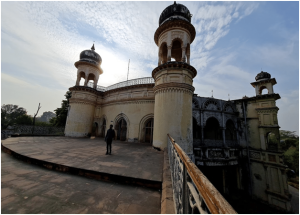
The magnificent palace Vyankat Bhawan houses a tunnel 25ft below its foundation which opens in the fort. The central hall has exquisite splendor of golden color carvings. A Shiva temple exists in the center of Rani Talab. At some distance from the lake there is lord Ram and Sita’s huge temple named Rani ka Mandir.
The density of the tiger population in Bandhavgarh is the highest known in India. This national park is densely populated with other species: Sambar, barking deer, wild pig, Sambar Chausingha and Nilgai are frequently sighted. The terrain is of a great rocky hills rising sharply from the swampy and densely –forested valley bottoms. Bandhav Garh Fort constructed 2000 years old. There are references to it in the ancient books. There are more than 22 species of mammals and 250 species of birds. Carnivores include Asiatic jackal, Bengal fox, sloth bear, ratel, grey mongoose, striped hyena, jungle cat, leopard and tiger. The vegetation along streams and marshes is rich in birdlife. The vegetation along streams and marshes is rich in birdlife. The common ones are little grebe, egret, lesser adjutant, sarus Crane, black kite, crested serpent eagle, black vulture, Egyptian vulture, common peafowl, red jungle fowl, dove, parakeet, kingfisher and Indian roller. Reptilian fauna include cobra, krait, viper, rat, snake, python, turtle and a number of lizard varieties, including varanus Coming back from wilderness must stay at Jabalpur, the capital of Gond dynasty during 12 th century. Later it was the seat of Kalchuri dynasty. You may see Rani Durgabati Memorial Museum, Tiwara Ghat where Mahatma Gandhi’s ashes were immersed in Narmada River.
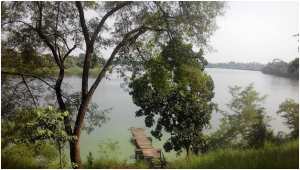
You may go for Dumma Nature Reserve excursion. It’s an eco-tourism site, area of 1058, Visitor can explore the reserve place. May spot the wild animal like spotted dear, wild boar, monkey, porcupine, many types of birds.
25km away from Jabalpur, Bhedaghat is sacred as the confluences Bangana with Narmada. Soaring in glittering splendor, the marble rock rise to 100 feet on either side of Narmada. Here and there the limestone is seamed by the veins of dark green, black, volcanic rock.
Further upstream Dhuandhar water falls means smoke cascade. Here Narmada leaves its wide bed and falls from 30feet height in a spectacular cascade. So powerful that the water droplets creating an illusion of vapors or smoke.
Chaunsath Yogini Temple built on a hillock, is approached by a long flight of steps. The old monuments that stood to the construct ion of the Yogini Temple.
35 km from Jabalpur, Bargi also an option to visit. Local cruising is available. Cruise rides 90km one way, approximately 5 to 6 hour. If you wish you can stay one night.
Amarkantak lies at the meeting point of three central India hills range- Vindhyas, Satpuras, Maikal. It bordered with lofty hills, dense forest. Two great rivers Sone and Narmada arises here. While Narmada flows westwards Sone flows to east. There are several stories regarding the origin of Narmada and river has bestowed various names like Rewa, Shankari and Maikasula. There are 24 temples at Amarkantak. Facing the Narmada Udgam temple is the Mata Narmada Temple is Shaktipit. Oldest Trimukhi temple dedicated to shiva.
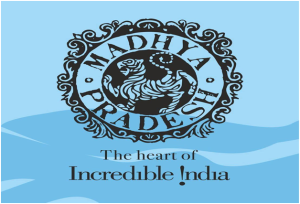
HOW TO GO :
Take a train (Mumbai mail/ Sipra Express) from Howrah, second day you reach to Satna. From Satna you go to Khajuraho and stay 2 nights. Next morning go to Panna and stay 1 night do the safari. From Panna come to Rewa and stay 1 night.
From Rewa you go to Parsili and stay 2nights. From Parsili come to Bandhavgarh and stay 2nights after that come to Jabalpur for 2 nights. Then go to Amarkantak and stay 2 nights. After sightseeing come to Bilaspur. From there you will get trains to come back to your home town. So you will be covering Heritage, wildlife, pilgrims ( Hawrah – Satna- Khajuraho- Panna-Rewa-Parsili – Bandhavgarh – Jabalpur – Amarkantak – Bilaspur- Howrah).

Advertisement:

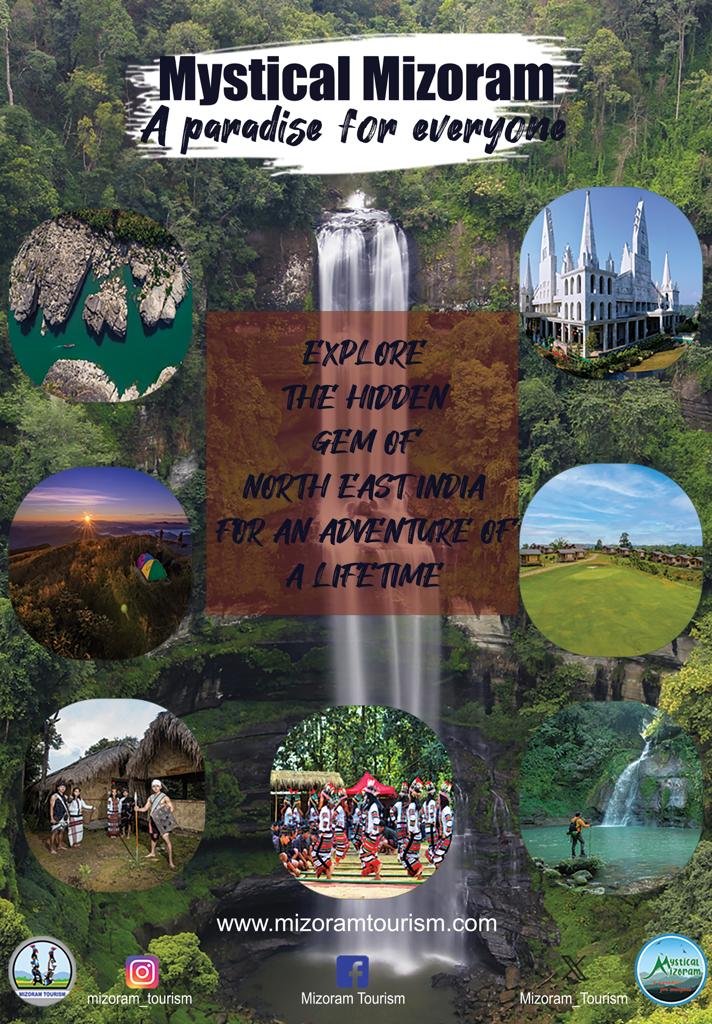

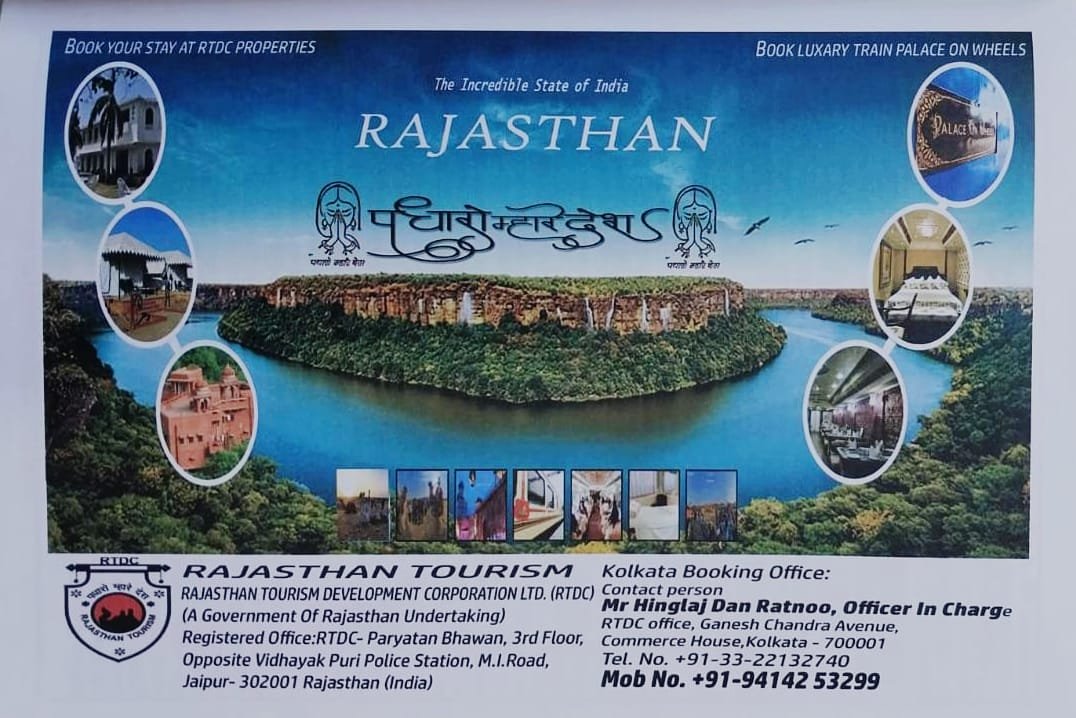

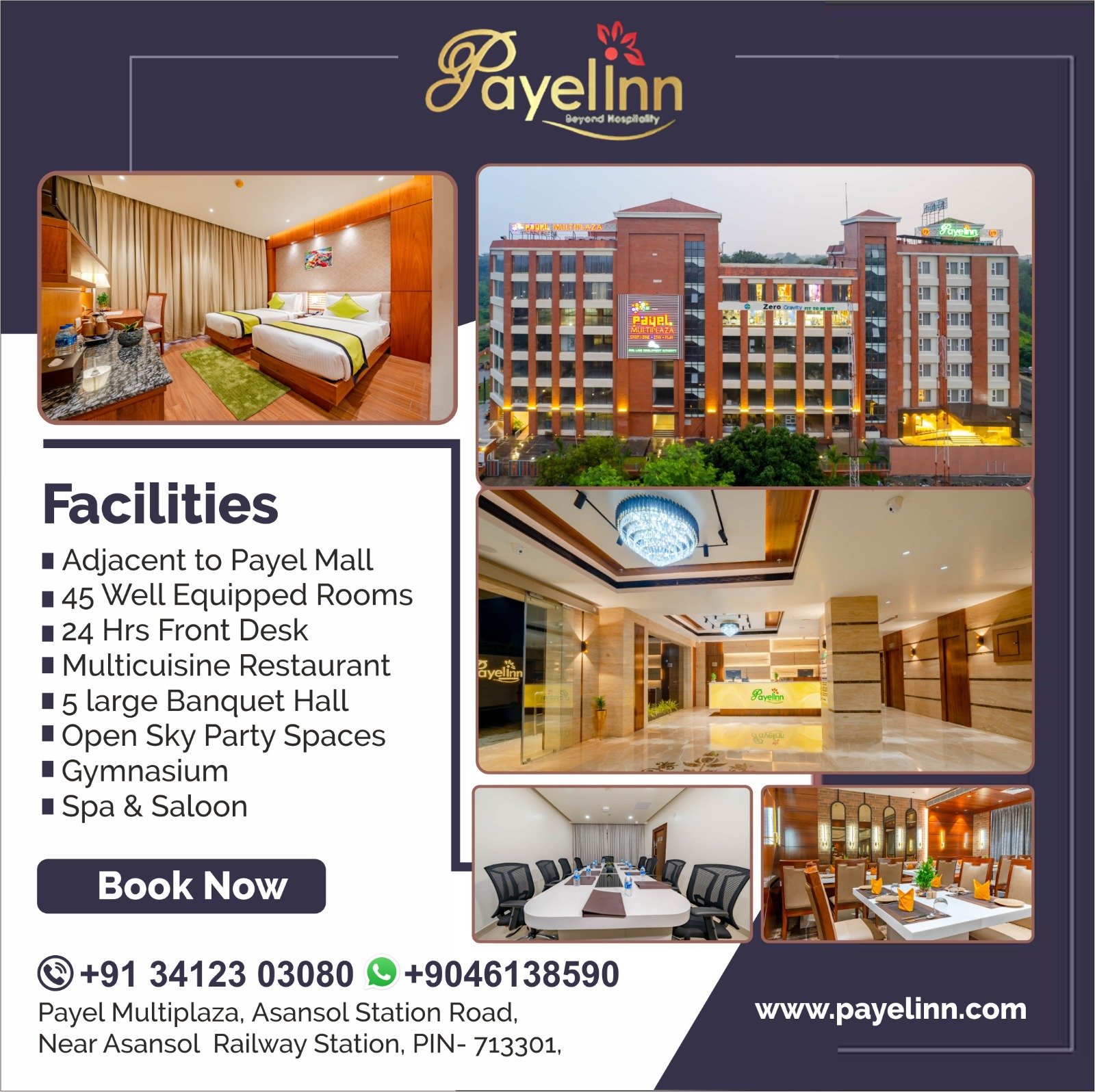


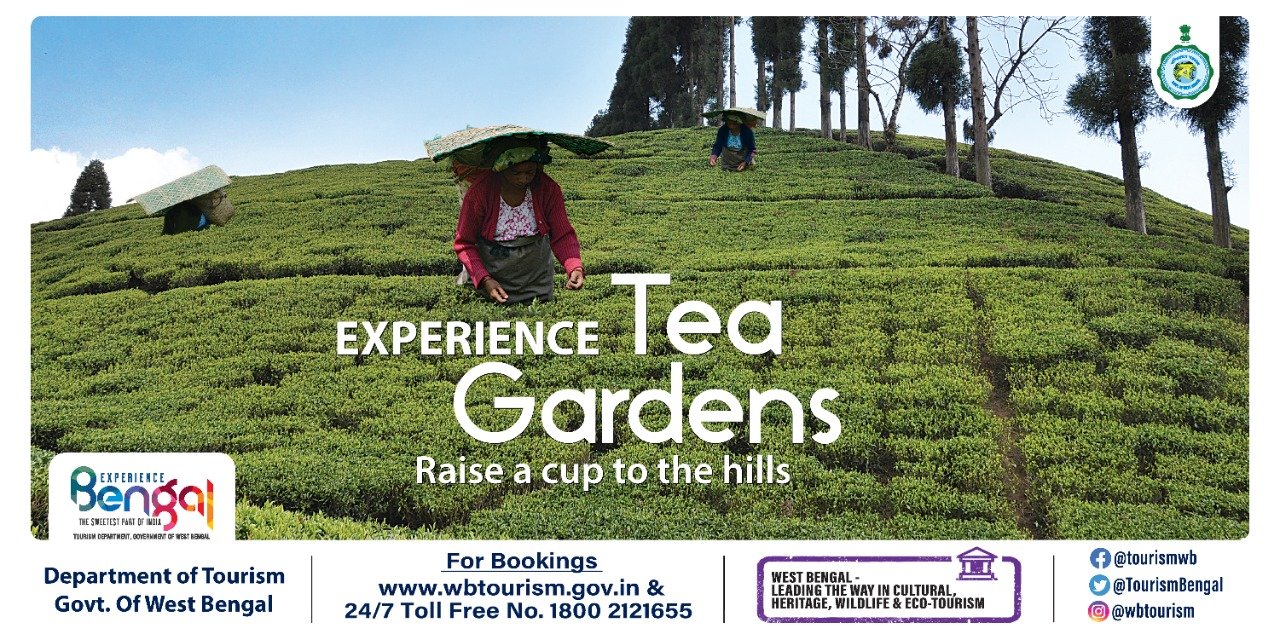



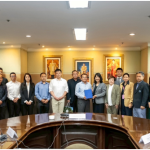
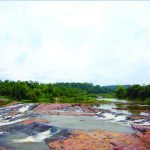




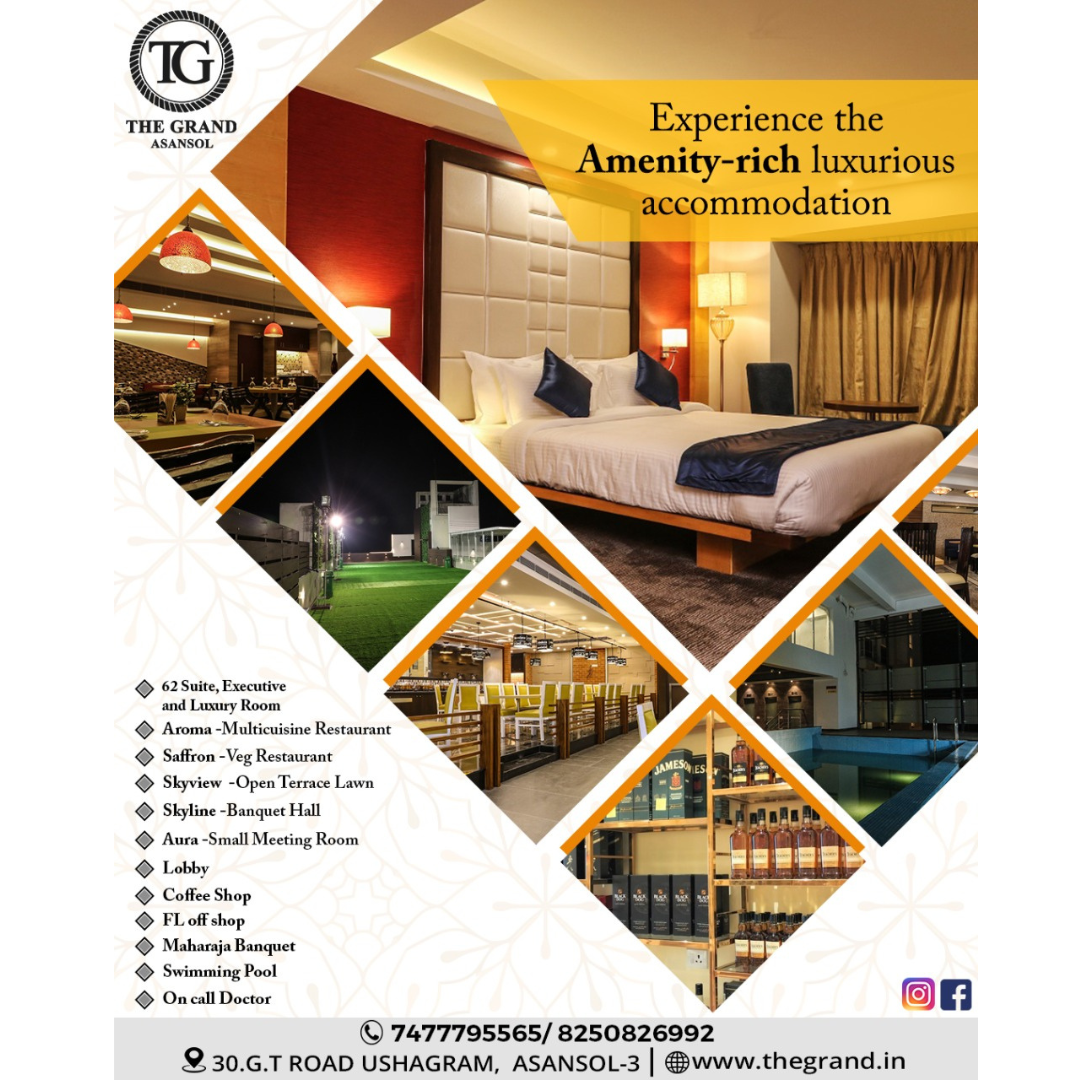

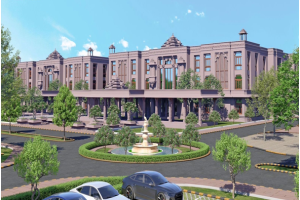








Add Comment